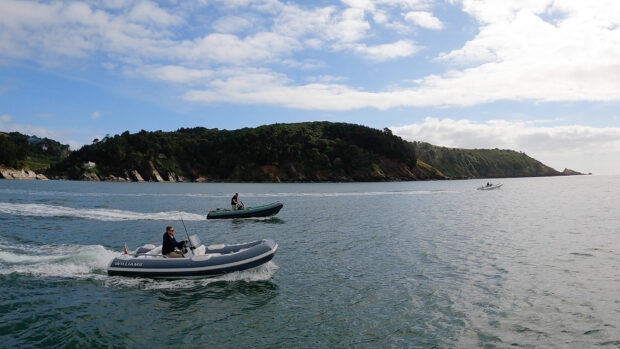MBY editor Hugo Andreae explains why antifouling your boat is so important and how to do it right
So why can’t I buy TBT-based paints now?
TBT settled in high enough concentrations around marinas and estuaries to cause lasting damage to the marine life, leading to a ban on TBTs for use on leisure vessels under 25m in the UK and Holland during the late 1980s. This was adopted by other countries around the world culminating in a worldwide ban in 2002.
Does that mean today’s antifouling paints are less effective than they used to be?
Although manufacturers are loathe to admit it, that probably is the case. Some owners stockpiled TBT paints before they were banned and rumours persist that it may still be possible to track down supplies from unscrupulous sources.
Are they likely to ban copper?
Probably not, though Holland has tried to ban it once and there are restrictions on its use in Sweden. Copper is naturally occurring in water and in small quantities actually forms part of most marine organisms’ diet. It also disperses more readily than TBTs and rapidly complexes into harmless copper compounds.
So how can copper act as a biocide?
When it is ingested in large enough quantities it becomes toxic. Contrary to popular belief, it is not copper itself or copper oxide that is the most active element of the biocide, it is the cuprous ion (Cu+). This ion is formed when copper oxide comes into contact with seawater in the presence of oxygen.
Because this ion is easily absorbed by organic matter, it will eventually overwhelm the natural biological processes of the organisms.
However, the thin barrier of copper ions that surround the boat’s hull is usually enough to dissuade barnacles and weed from even trying to attach themselves to the painted surface.
As the cupric ion complexes and becomes more dilute, fouling can happily survive just inches away. That’s why even the smallest areas of unpainted hull can rapidly attract a thick layer of healthy barnacles.
Is there a TBT-free self-polishing paint?
Although you may find the term ‘self-polishing’ on paints, they may simply be eroding (otherwise known as ‘ablative’) paints that have a self-smoothing action, rather than true copolymers.
Jotun has a new TBT-free self-polishing product in their commercial range of antifouling paints. Seajet also claims that its Platinum 039 is a genuine self-polishing paint.
Why can’t all copper-based paints be used on outdrives and propellers?
Copper and copper oxide can promote electrolytic corrosion of aluminium alloys. That said, some hard antifoulings like International Trilux and Seajet Emperor are safe to use because copper thiocyanate does not cause the same problem.
How come semi-permanent coatings stay active year after year?
Instead of using a leaching copper compound and an eroding paint matrix, they use pure copper (or a copper zinc alloy) in its metal form set in a much harder coating such as epoxy resin.
The tiny copper granules are either held in suspension in the paint (in systems like Coppercoat) or sprayed onto a resin surface while it is still tacky (Cuprotect).
It still works the same way, in as far as the copper metal once submerged in water starts to oxidise and then the cuprous oxide leaches copper ions into the water.
This process is much slower than the leaching of copper oxide from eroding paints and has the potential to last much longer.
However, erosion does still happen, which is why it is sometimes necessary to refresh them with an annual wash-off and light abrasion of the copper/resin mix to expose a fresh layer of copper. Most of these coatings have a quoted life expectancy of over ten years and plenty of users swear by them.
Why doesn’t everyone use a semi-permanent coating?
In the short term they are more expensive than conventional antifoulings, harder to apply (you need to completely scrape or blast off any old antifouling), only available in one colour (brown when fresh, greeny/blue when oxidised), and seem to work better for some people than others. This may be due to poor application, insufficient burnishing between seasons or local conditions.
A patchy history of companies coming and going, as well as confusion over the types of copper treatment (copper tiles were briefly tried and then withdrawn), hasn’t helped customer confidence either.









